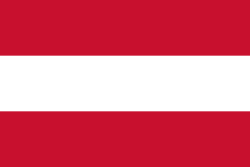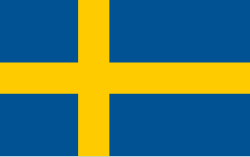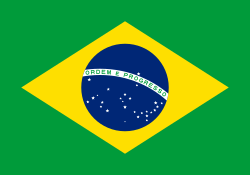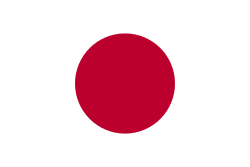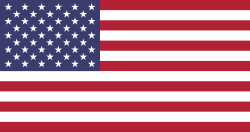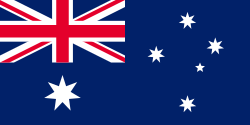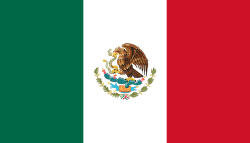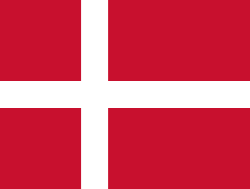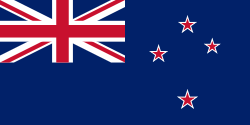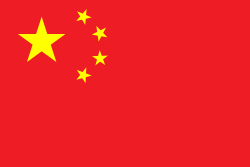Chris Haggard
| Chris Haggard | |||||||||||||
| Nation: | |||||||||||||
| Geburtstag: | 28. April 1971 (54 Jahre) | ||||||||||||
| Größe: | 178 cm | ||||||||||||
| Gewicht: | 71 kg | ||||||||||||
| 1. Profisaison: | 1993 | ||||||||||||
| Rücktritt: | 2009 | ||||||||||||
| Spielhand: | Links, beidhändige Rückhand | ||||||||||||
| Preisgeld: | 1.196.035 US-Dollar | ||||||||||||
| Einzel | |||||||||||||
| Karrierebilanz: | 1:2 | ||||||||||||
| Höchste Platzierung: | 223 (17. Juni 1996) | ||||||||||||
| Doppel | |||||||||||||
| Karrierebilanz: | 239:304 | ||||||||||||
| Karrieretitel: | 6 | ||||||||||||
| Höchste Platzierung: | 19 (8. September 2003) | ||||||||||||
| |||||||||||||
| Mixed | |||||||||||||
| |||||||||||||
| Quellen: offizielle Spielerprofile bei der ATP/WTA (siehe Weblinks) | |||||||||||||
Christopher „Chris“ Haggard (* 28. April 1971 in Pretoria) ist ein ehemaliger südafrikanischer Tennisspieler.
Karriere
Haggard wurde 1993 Tennisprofi und nahm außer am Anfang seiner Karriere ausschließlich im Doppel an ATP-Turnieren teil. Im Einzel spielte er zwar zahlreiche Challenger-Turniere, qualifizierte sich jedoch nur zweimal für ein Turnier der ATP Tour. Dort scheiterte er jeweils im Queen’s Club, 1996 in der zweiten Runde an Boris Becker und 1997 schon in der ersten Runde. Über das Spiel gegen Becker sagte er jedoch, dass für ihn ein Traum wahr wurde, weil seine großen Jugendidole Becker und John McEnroe waren.
Im Doppel stand er achtzehn Mal in einem Finale und konnte sechs dieser Turniere gewinnen. Bei Grand-Slam-Turnieren war Haggards größter Erfolg der Einzug ins Halbfinale der Australian Open 2003 an der Seite von Landsmann Jeff Coetzee. Im Davis Cup stand er fünfmal für Südafrika im Doppel auf dem Platz und konnte drei dieser Begegnungen für sich entscheiden.
Sein letztes ATP-Turnier bestritt er im Mai 2009 in München. Danach bestritt er noch bis 2016 vereinzelt Future-Turniere.
Erfolge
|
|
Doppel
Turniersiege
ATP World Tour
| Nr. | Datum | Turnier | Belag | Partner | Finalgegner | Ergebnis |
|---|---|---|---|---|---|---|
| 1. | 1. August 1999 | Sand | 6:3, 6:74, 7:64 | |||
| 2. | 21. Juli 2002 | Sand | 7:61, 6:3 | |||
| 3. | 6. Oktober 2002 | Hartplatz | 7:64, 6:4 | |||
| 4. | 5. Januar 2003 | Hartplatz | 2:6, 6:4, 7:67 | |||
| 5. | 22. August 2004 | Hartplatz | 7:63, 6:1 | |||
| 6. | 26. Februar 2006 | Hartplatz | 0:6, 7:5, [10:5] |
ATP Challenger Tour
| Nr. | Datum | Turnier | Belag | Partner | Finalgegner | Ergebnis |
|---|---|---|---|---|---|---|
| 1. | 2. November 1997 | Hartplatz (i) | 3:6, 6:1, 7:6 | |||
| 2. | 9. November 1997 | Teppich (i) | 6:3, 6:1 | |||
| 3. | 30. November 1997 | Hartplatz | 6:4, 7:6 | |||
| 4. | 24. Mai 1998 | Sand | 6:4, 6:2 | |||
| 5. | 13. November 2005 | Hartplatz (i) | 6:3, 2:6, 7:64 | |||
| 6. | 19. Oktober 2008 | Hartplatz (i) | 6:3, 7:5 |
Finalteilnahmen
Weblinks
- ATP-Profil von Chris Haggard (englisch)
- ITF-Profil von Chris Haggard (englisch)
- ITF-Senioren-Profil von Chris Haggard (englisch)
- Davis-Cup-Statistik von Chris Haggard (englisch)
| Personendaten | |
|---|---|
| NAME | Haggard, Chris |
| ALTERNATIVNAMEN | Haggard, Christopher |
| KURZBESCHREIBUNG | südafrikanischer Tennisspieler |
| GEBURTSDATUM | 28. April 1971 |
| GEBURTSORT | Pretoria, Südafrika |
Auf dieser Seite verwendete Medien
Pictograms of Olympic sports - Tennis. This is unofficial sample picture. Images of official Olympic pictograms for 1948 Summer Olympics and all Summer Olympics since 1964 can be found in corresponding Official Reports.
Verwendete Farbe: National flag | South African Government and Pantone Color Picker
| Grün | gerendert als RGB 0 119 73 | Pantone 3415 C |
| Gelb | gerendert als RGB 255 184 28 | Pantone 1235 C |
| Rot | gerendert als RGB 224 60 49 | Pantone 179 C |
| Blau | gerendert als RGB 0 20 137 | Pantone Reflex Blue C |
| Weiß | gerendert als RGB 255 255 255 | |
| Schwarz | gerendert als RGB 0 0 0 |
Flagge Österreichs mit dem Rot in den österreichischen Staatsfarben, das offiziell beim österreichischen Bundesheer in der Charakteristik „Pantone 032 C“ angeordnet war (seit Mai 2018 angeordnet in der Charakteristik „Pantone 186 C“).
Flag of Australia, when congruence with this colour chart is required (i.e. when a "less bright" version is needed).
See Flag of Australia.svg for main file information.Das Bild dieser Flagge lässt sich leicht mit einem Rahmen versehen
Die quadratische Nationalfahne der Schweiz, in transparentem rechteckigem (2:3) Feld.
Flagge des Vereinigten Königreichs in der Proportion 3:5, ausschließlich an Land verwendet. Auf See beträgt das richtige Verhältnis 1:2.
Flagge des Vereinigten Königreichs in der Proportion 3:5, ausschließlich an Land verwendet. Auf See beträgt das richtige Verhältnis 1:2.
Flag of Canada introduced in 1965, using Pantone colours. This design replaced the Canadian Red Ensign design.
Chinese Taipei Olympic Flag. According to the official website of Chinese Taipei Olympic Committee, Blue Sky(circle) & White Sun(triangles) above the Olympic rings is neither the National Emblem of the Republic of China, nor the Party Emblem of Kuomintang (KMT), but a design in between, where the triangles do not extend to the edge of the blue circle, as registered at International Olympic Committee in 1981 and digitally rendered in 2013. Besides, the blue outline of the five-petaled plum blossom is broader than the red one. Moreover, the CMYK code of the blue one and the Blue Sky & White Sun is "C100-M100-Y0-K0", and different from the Olympic rings (C100-M25-Y0-K0). Note that it's the only version recognized by IOC.
Chinese Taipei Olympic Flag. According to the official website of Chinese Taipei Olympic Committee, Blue Sky(circle) & White Sun(triangles) above the Olympic rings is neither the National Emblem of the Republic of China, nor the Party Emblem of Kuomintang (KMT), but a design in between, where the triangles do not extend to the edge of the blue circle, as registered at International Olympic Committee in 1981 and digitally rendered in 2013. Besides, the blue outline of the five-petaled plum blossom is broader than the red one. Moreover, the CMYK code of the blue one and the Blue Sky & White Sun is "C100-M100-Y0-K0", and different from the Olympic rings (C100-M25-Y0-K0). Note that it's the only version recognized by IOC.
Flag of Serbia and Montenegro, was adopted on 27 April 1992, as flag of Federal Republic of Yugoslavia (1992-2003).


